ADS Themes 2022/23
Jump to
- ADSO: Environments
- ADS1: Down to Earth
- ADS2: Shifting Earths: Designing with the Infra-Structural Life of Circulation
- ADS3: Unwritten Constitution
- ADS4: Green Room
- ADS5: And Now You Know
- ADS6: Film Make Place
- ADS7: Convivial-ism
- ADS8: Anatomies of Ecological Bodies – Assemblages of Coloniser and Colonised
- ADS9: ℵ0
- ADS10: Savage Architecture – Changing Practices
- ADS11: الهجرة Hijra
- ADS12: Limits
The core learning on the MA Architecture programme is project-based according to a unit system made up of 13 architectural design studios (ADSs), each with a unique set of concerns, methods and critical frameworks.
ADSO: Environments
This year ADSO will focus on the development of “installative spatial environments”, systematically narrating about ongoing change. These environments or installations will act as as a pictorial stage or as a speculative scenography for the particular themes of change we individually engage with.

ReinhardMucha, Mutterseelenaillein#3,1979-1989-1991-2009
ADS1: Down to Earth
"To be born is to be shipwrecked in nature,” as the historian Irenée Scalbert explains, “and our happiness, our existence even, depends on the wisdom of our ecology." Our ambition in ADS1 is to engage with such forms of wisdom.
This year ADS01 will work from the basis that the architectural and environmental project are one and the same. And that disciplinary boundaries drawn between ‘landscape’ and ‘architecture’ ought to be softened, if not dissolved entirely. We will draw from a consortium of experts in the reuse of buildings, their structural and mechanical challenges, as well as the adaptation of the territory surrounding them, learning from hydrologists, building scientists and landscape architects. We will develop new strategies both for transforming existing buildings, and unsealing the urban surface on which they stand.
Read the full ADS1 brief
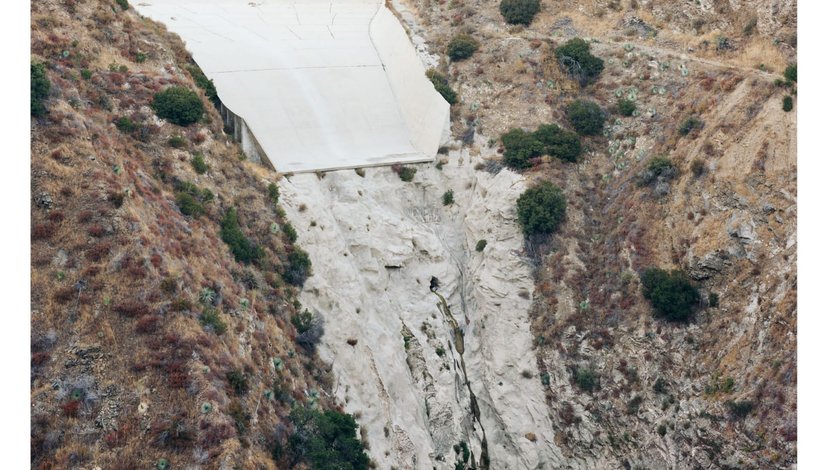
Bas Princen, Reservoir (Concrete rundown), 2005
ADS2: Shifting Earths: Designing with the Infra-Structural Life of Circulation
ADS2 is otherwise known as Wahala Palava and led by Dele Adeyemo, Ibiye Camp and Dámaso Randulfe. It is a gathering of voices that think and discuss the architectures of racial capitalism, their historical emergence and their contemporary expressions. The studio explores the ways in which the racialising violence of the extractive world-making project of capital inscribes black, indigenous and other-than-human lives. Like the palavas of old, Wahala Palava gathers to speak into existence and shape designs for worlds, which can contend with the imminence of environmental collapse and our premature deaths. The studio mobilises indeterminacy and alterity as means to foster strategies for worlding within racial capitalism’s ruins, and in the midst of the violence of extractive architectures. By spanning the entangled migratory and trade routes between the Global South and the Global North, the logics of development in indigenous land, or the global cycles of production, distribution and consumption, ADS2 seeks to develop spaces of care, restitution, rest and rebirth.
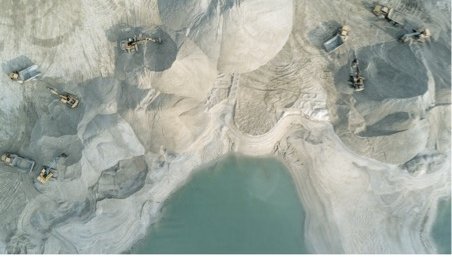
Sim Chi Yin, Shifting Sands, 2017–ongoing, published in Migrant Journal 5. Singapore has increased its land size by 20 per cent since 1965 by reclaiming land on the sea. After exploiting all the sand available within its own territory, it is now importing aggregate from its neighbouring Asian countries.
ADS3: Unwritten Constitution
This year, ADS3 will explore how a constitution can be embodied, performed, contested, developed and rebuilt in spaces beyond the written legal text. We will look at the gaps between the letter of the law and how it is lived out, asking what roles can institutional critique, civil disobedience and drag play in facing the urgencies of climate crisis, mass extinction, social exclusion and political mischief.

Jonas Staal, The Court for Intergenerational Climate Crimes (CICC), 2021–22
ADS4: Green Room
In response to decades of useless logorrhea, political indifference and hostility, and the climate crisis, this year ADS4 sets out to develop a performative architecture, which borrows from theatre’s understanding of the primacy of language on our perception of both time and landscape. We will interrogate the technologies that – through the influence of feudalism, colonialism and capitalism – have historically corrupted representations of landscape. Instead, we will utilise emerging technologies that are likely to determine our future place within it. ADS4 believes we must rewild our language before we can rewild the world.
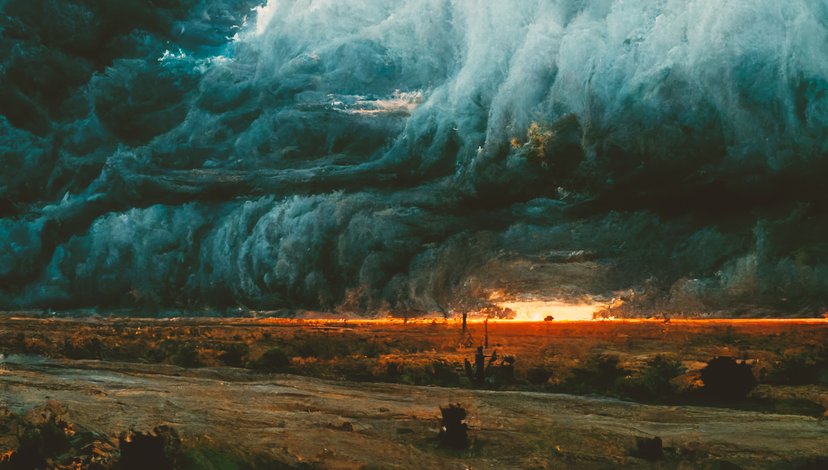
“Landscape at the End of time” (Midjourney)
ADS5: And Now You Know
In 2022/23, ADS5 will concentrate on literal building elements and their origins, carbon sequestering materials and how they can be joined, bound and brought to completion. We aim to equip students with the knowledge, skills and confidence to help change the construction industry from a 40 per cent contributor of manmade atmospheric carbon to an industry that is actively carbon sequestering. From being part of the problem, to part of the solution. We will explore the structural, environmental and poetic potentialities of the physical materials that architecture must be made from. By collaborating with structural and sustainability engineers, cost consultants, stonemasons, digital fabricators, and material suppliers, we will develop the expertise to confidently articulate alternative ways of making buildings. Enabling conversations with future clients, bosses, friends, or colleagues. Together we will embrace the collective challenge of educating ourselves about the climate crisis and applying our skills, time and thinking towards mitigating these impacts.

Andrew Reynolds, Cultivating Wetness, ADS5 2nd Year Project, 2021/22
ADS6: Film Make Place
If we accept that buildings and cities are instruments of time, and both are as much of the mind as they are physical, then it is easy to see how film and architecture share a visual and material world. The perception of a space is as much defined by its associations as by its physical qualities. When we watch a film, we register all the mental, sensual and physical faculties that are engaged in a particular space at a particular time. And yet such permanence does not have to be a building which is recognisable by its material appearance. Let us equate filmic experience to that of physical space and consider how we can intersect the making of films and buildings. In 2022/23, ADS6 will continue to develop a series of briefs under the umbrella ‘Film Make Place,’ with particular emphasis on filmmaking. This year we want to explore film in relation to making and place. Can filmmaking be understood as a spatial practice?

Anna Russell, ADS6 2021/22.
ADS7: Convivial-ism
ADS7: Convivial-ism will question all possibilities of coexistence. We will embrace the transgressions and liminal conditions that exist right now – social hierarchies being reversed or dissolved, continuities of tradition becoming uncertain, and identities being disoriented and reaffirmed. Taken from the Latin limen (or ‘threshold’), liminality has both spatial and temporal connotations. We are interested in questioning liminality as a period of time, as well as identifying the space it is executed within. We will work through forms of knowledge based on first–hand experience, together with the manipulation of empirical, physical or virtual findings. We want to understand our reactions to liminal experiences and the way it shapes our personalities and the environments we inhabit.

Rosalie Yu, “A ritual of habits”, 2018. Over the course of two years, the artist explored her own relationship with sugar by digitally capturing all the sweets and desserts she has eaten, transforming them into a virtual reality experience and a 3D printed installation.
ADS8: Anatomies of Ecological Bodies – Assemblages of Coloniser and Colonised
Departing from an inquiry into the ecologies of colonial anatomies – visible and invisible – ADS8 weaves two intertwining acts that not only allow us to, on the one hand, dissect and dismember layers of the Empire and the ways in which these anatomies incarnate and operate in space, but also, on the other, incite ways of exploring possible forms of disobedience and infiltration.
Act One (Terms 1 & 2) adopts a forensic, analytical and conceptual approach that is induced by desk research, roundtables and seminars, collective readings and fieldwork, setting the ground for investigating the complexities of the political context(s) in which we will engage. Act two (Terms 2 & 3) inclines toward an approach that is equally material, experimental, tactical and speculative through the use of various representational formats – analogue, digital, textual, sonic – in its articulation of a spatial grammar, which prompts us to imagine reparative justice at different scales.
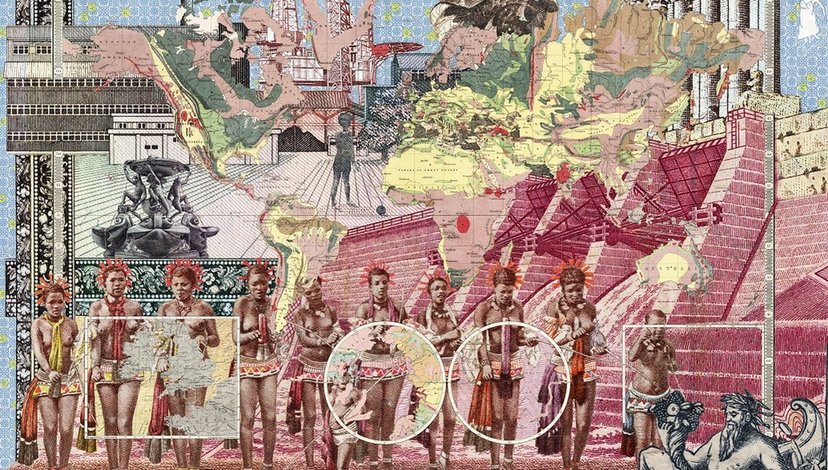
Malala Andrialavidrazana, Figures 1856, Geological structure, 2018.
ADS9: ℵ0
Open plan. Out in the open. Open air. Open sky. Open water. Stood open. Open 24 Hrs. Open sesame. Open door policy. Open society. Open relationship. Nope. Open system. Open file. Opera Aperta. Openwork. Open arm. Open-heart. Keep your eyes wide open.
Keeping an open-mind.
ADS9 investigates the architecture of openness. The studio imagines a boundless architecture, which has no separation and distinction between walls and space, building and site, bodies and environment, earth and sky. An architecture of openness that exists as a single continuum of everything, everyone and everywhere.

Yamazaki Ko-Ji
ADS10: Savage Architecture – Changing Practices
ADS10 explores the idea of Savage Architecture – an architecture that is not mere shelter and comfort, nor display and reproduction of wealth, but rather the material and symbolic basis of the human necessity to come together and engage in collective rituals.
Savage Architecture occurs when need gives away to possibility, when sheer survival turns into will to power, when the individual reproductive life acquires a collective dimension and a representation in the public sphere, becoming an instrument for political change.
ADS10 looks for those cracks of reality where collective subjects can resist the all encompassing logic of economy by carrying out alternative forms of life. Working at the intersections of an anthropological gaze, political thought, construction techniques, ecological strategies and curatorial practices, we practise a research and design method that aims at empowering these collective subjects. We seek to produce an architecture that gives concrete substance to struggles and ideas for other possible worlds.
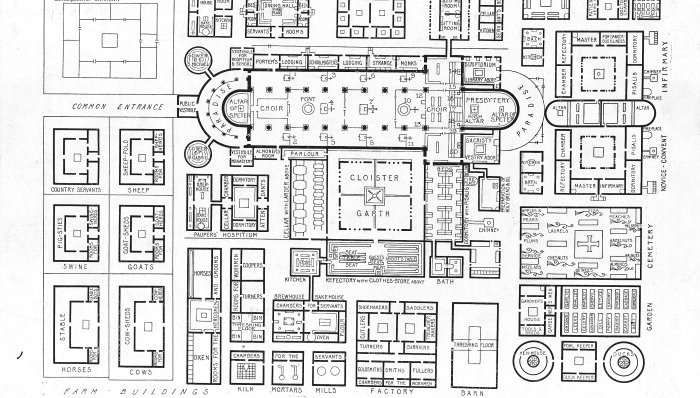
Plan of Saint Gall monastery, Reichenau, ca.820–830.
ADS11: الهجرة Hijra
This year, ADS11 will travel with and trouble the fringes of the term hijra الهجرة – an Arabic word referring to ‘emigrating’, ‘passing’ or ‘coming’. The term hijra الهجرة also speaks to the ‘gathering’ one might find in preparation of the journey, at its midst, in the line of flight and at the destination, if indeed such places exist.

The Catalan Atlas, published in 1375, depicts Mansa Musa, the emperor of 14th-century Mali.
ADS12: Limits
In 2021/22, the projects of ADS12 enacted promises of strategic omissions, wilful refrains and absences. Instead of perpetuating the view that architecture conflates acts of removal and reduction with aesthetic norms, we explored the productive potential of loss, development without growth, and the possibilities of whether deprivation can open new viewpoints. This year, we will deal with limits of experience as a means to discover the boundaries of our human senses. The notion of ‘limits’ implies the shift from the known and ordinary to the unknown and extraordinary. A transit that we will seek to unearth novel relational patterns between the participants in the studio and nature. By producing in extremis spatial and ambient scenarios, the studio will ask new questions about our existing behaviours and architectures?
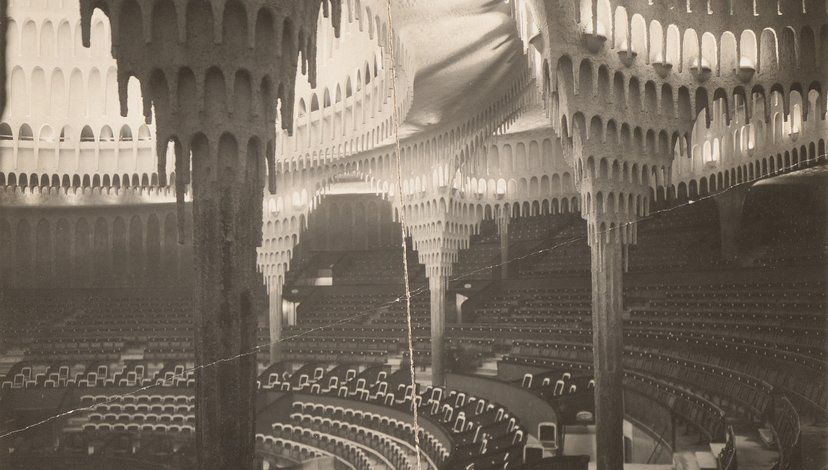
Theatre as a lawless space; the site of violent acts, absurdity and extreme emotion. Hans Poelzig’s Großes Schauspielhaus (1919), Berlin, Germany. Cavernous and red, the stalactite-columns replaced a market, and later played host to a circus.